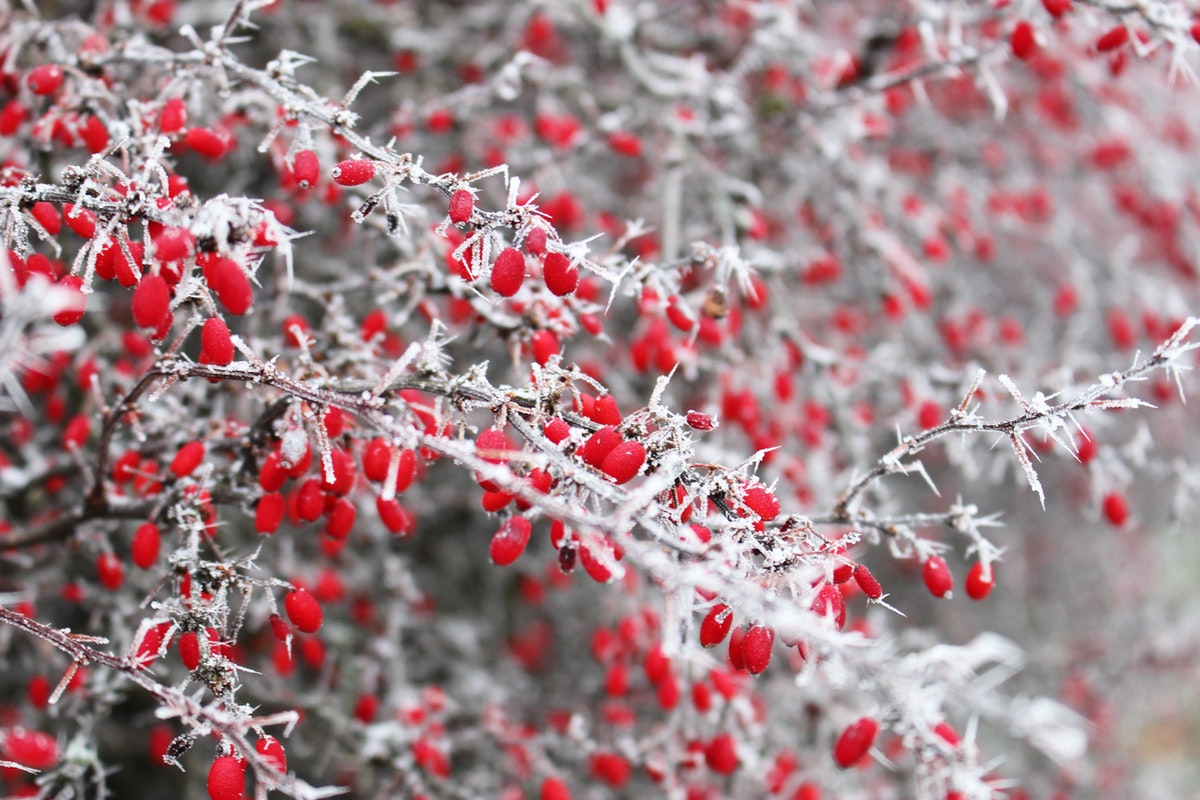
As the mercury drops, Chicago gardeners cozy up indoors. But there’s one more thing to do before snow falls – winterize your Chicago garden. We’ll show you how.
Winter prep will help provide your garden soil with the nutrients it needs to grow a bounty of plants next growing season. Do the hard work now, and come next harvest, you could be savoring a Chicago-style deep dish pizza topped with juicy vegetables straight from the garden.
Where to begin to winterize your Chicago garden? Slip on your winter-hardy boots and warmest scarf (or scarves) and follow our 14-step guide to get your Windy City garden ready for the wintry season.
14 Ways to Winterize Your Chicago Garden
1. Get others to help you
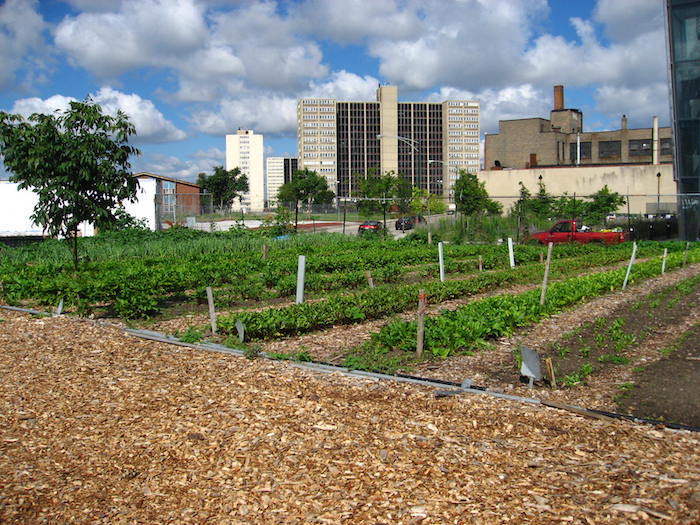
Photo Credit: Linda / CC BY 2.0
Winterizing your garden can be a lot of work, but it needn’t be a solo affair.
Here’s how to get some help:
Get the family to help with the harvesting, weeding, mulching, and moving less hardy plants indoors until springtime.
Do you garden at one of Chicago’s community gardens? Embrace the community culture and invite the local gardeners to tend to the garden — and help your neighbors with their cold weather prep, too.
Whether you’re tending the garden with family members, a friend, or a stranger, four (or more) hands are better than two. The work gets done faster, and that means everyone can kick back with a hot chocolate sooner.
2. Decide when to harvest
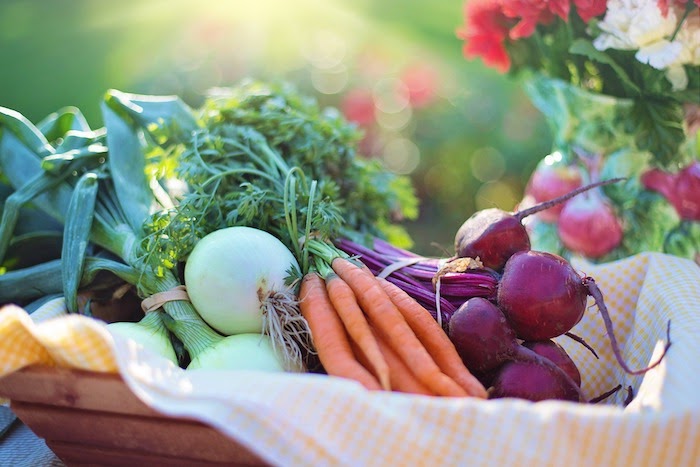
Chicago falls into USDA Plant Hardiness Zones 5b and 6a, and Zone 5 has a medium to short growing season, so you may try to stretch your growing season. In Chicago, this is risky.
Here’s why delaying your harvest can be a bad bet: Ever heard of the first frost? It’s hard to time because there is no definite date for when the first frost will hit. In Zones 5 and 6, the first frost typically occurs in October, but that’s only an estimate.
An unexpected frost can ruin much of your harvest. As you toss out the ruined vegetables that could have topped your deep dish pizza, you’ll wish you had harvested them sooner.
But a frost isn’t always bad… a frost can make some vegetables taste better. Greens like kale, swiss chard, and collards can become a bit sweeter after a light frost.
A note about root crops: Crops growing below the soil’s surface aren’t affected by frost, but a freeze — well, that’s another story. Your carrots, beets, parsnips, and rutabagas will survive a frost and still taste great.
Pay attention to the weather forecasts. The difference between a frost and a freeze is a few degrees. Harvest your root vegetables before it’s too late (and too cold).
3. Remove annual flowers and vegetables
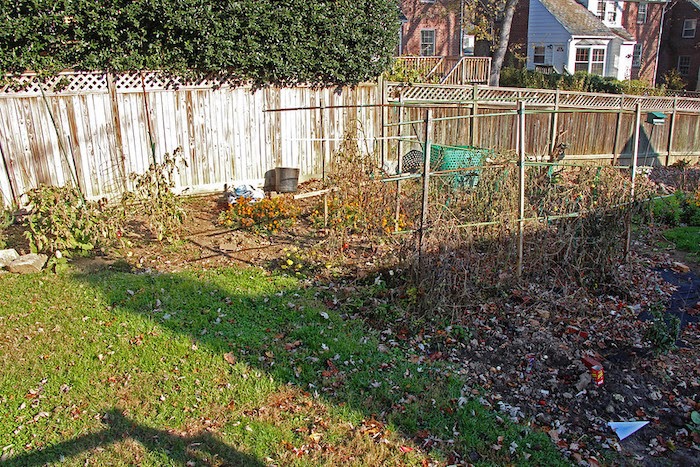
Your winterization checklist includes removing the annuals from your garden.
What are annuals? Annual vegetables like radishes and tomatoes need to be replanted every year. You’ll need to replant your annual flowers, too.
Here’s what to do: Dig up your garden’s spent annual flowers and vegetables, and clean up the debris.
Why you need to do this: If you don’t remove your annuals, pests and bacteria will overwinter in the remains and threaten your plants next growing season.
4. Pull the weeds
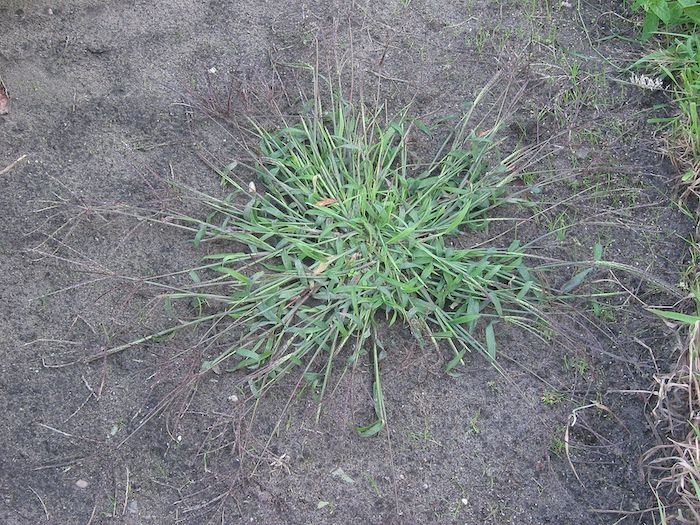
We’re all procrastinators when it comes to pulling weeds, but today, there are no more excuses. Grab the garden gloves and rid your garden and flower beds of weeds.
Why weeding is necessary: Pests and bacteria are looking to overwinter in any real estate on the market. Cut them off and send them packing.
5. Bring your tender plants indoors
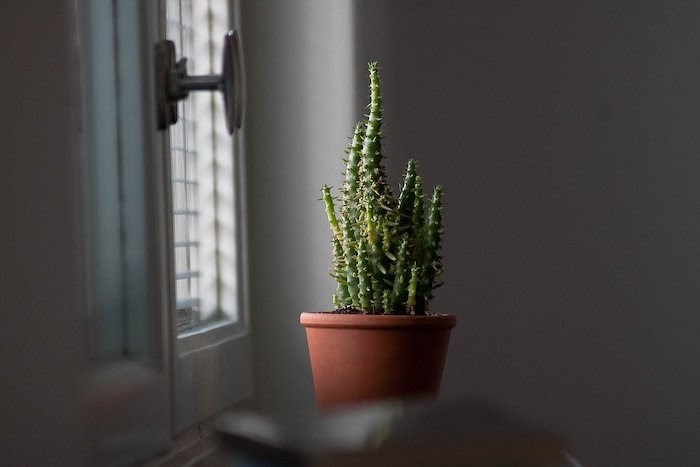
Frigid weather is coming, so bring your vulnerable outdoor plants indoors now.
Which plants are most at risk if left out in the cold? Your most vulnerable plants will likely include succulents, tropicals, potted flowers, and tender bulbs. A frost or sudden drop in temperature may shock or kill these plants.
An added benefit: Bring these tender plants indoors and show them off as houseplants.
Protecting your vulnerable bulbs is a little more work. Here’s what to do:
- Remove your tender bulbs from the soil and dry them. Keep in mind that storing moist bulbs may lead to rot.
- Dry the bulbs on trays in the garage or tool shed, but make sure to do this before temperatures start getting too cold at night.
- Store the dry bulbs in mesh bags.
- Add several sheets of paper between the bulbs to help absorb excess moisture.
6. Divide the overcrowded perennials
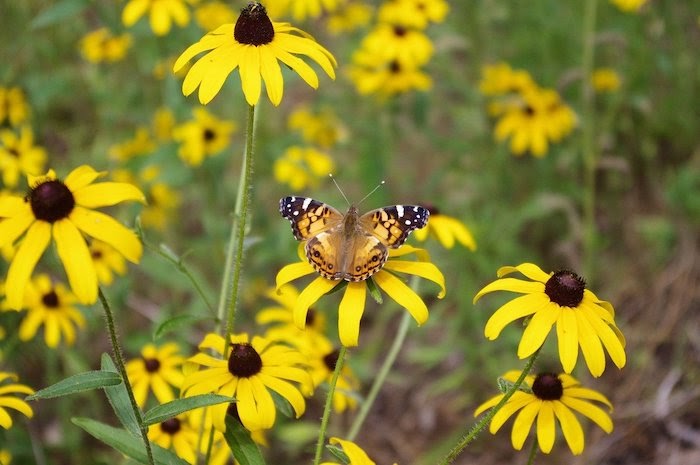
If your perennial flowers are growing in dense clusters, it’s likely time to divide them. Here’s why: Overcrowded plants can cause the roots and bulbs to compete for air, space, and nutrients.
How to divide your perennials:
- Dig up the parent bulb with care, and remove loose dirt from around the roots.
- Divide the plants by teasing apart the roots by hand.
- Cut roots that are difficult to separate with a sharp knife or split them apart with two forks.
- Ensure your divisions have an ample amount of roots before planting them back in your flower bed.
The result: The next time your flowers bloom, the new growth should appear fuller and more spread out.
7. Transition to the greenhouse or cold frame
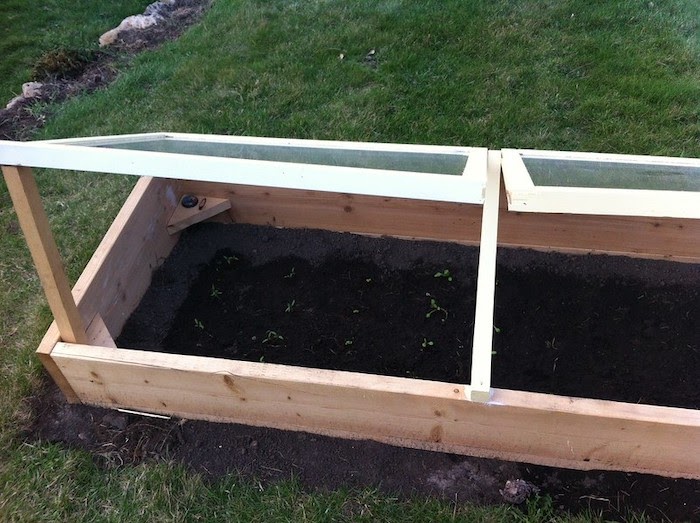
Chicago’s frigid winters don’t have to end your gardening. Extend your growing season by moving the gardening to a greenhouse or small cold frame.
How to do this: Dig up the plants from your garden and replant them in pots or containers in your greenhouse or small cold frame.
How a greenhouse helps you garden: With a greenhouse, you can regulate the climate conditions inside to keep your plants thriving when it’s snowing and sleeting outside. Come springtime, move your plants from the greenhouse to the garden again.
The result: With the right greenhouse, you can keep gardening year round.
8. Harvest the compost pile
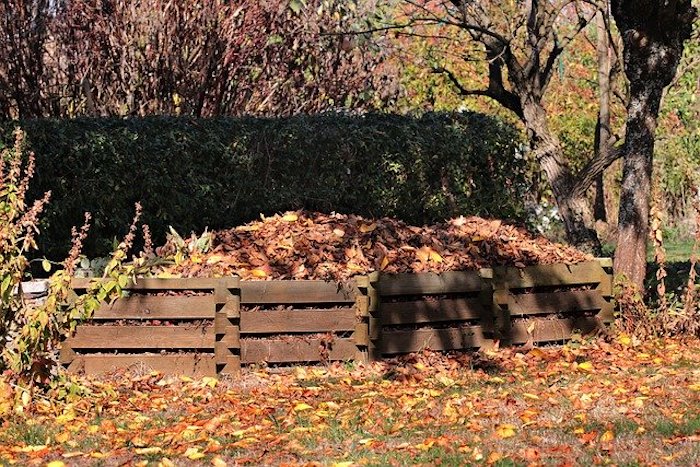
Next on your garden winterization checklist is your compost pile, but what does compost have to do with vegetables and flowers? Think of your compost pile as rich nutrients to enrich your garden’s soil.
Here’s what to do: The summer’s heat baked your decomposing compost into a pile of nutrient-rich material that now is ready to be spread over your flower beds and vegetable gardens to rejuvenate the depleted soil.
The replenishing nutrient-booster will have your plants springing into the next growing season.
Which brings us to the circle of life, or in this case the circle of compost.
Now that your compost bin has some free space, it’s time to begin composting next year’s nutritious soil amendment. Rake up the fallen leaves, gather the grass clippings, and — in a few weeks — throw in the holiday scraps.
9. Insulate with mulch
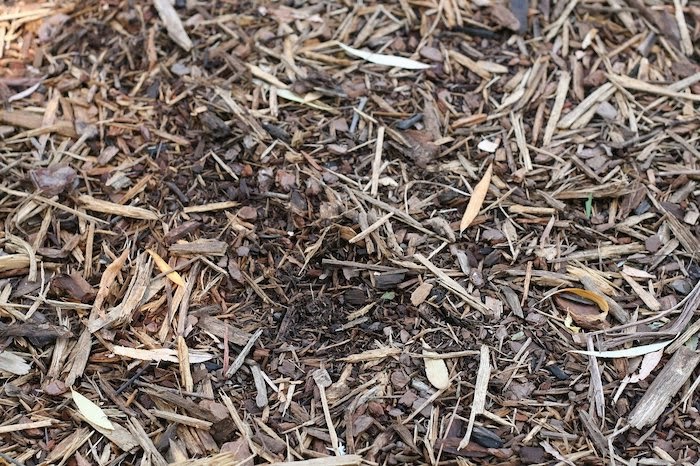
You might think a layer of mulch will keep your plants warm through winter, but it actually helps keep them cold.
How it works: A 2- to 3-inch thick layer of mulch creates an insulation barrier that separates the soil from the winter air. So while the mercury may rise during a warm spell, the cold soil temperature remains consistent.
Why this matters: It’s unhealthy for our plants to endure a cycle of freezing and thawing. Consistent underground temperatures are essential to plant health.
Other mulching benefits: Organic mulch, like wood chips or shredded leaves, can help retain moisture, control weeds, and add organic matter to the soil.
10. Shut off the irrigation system
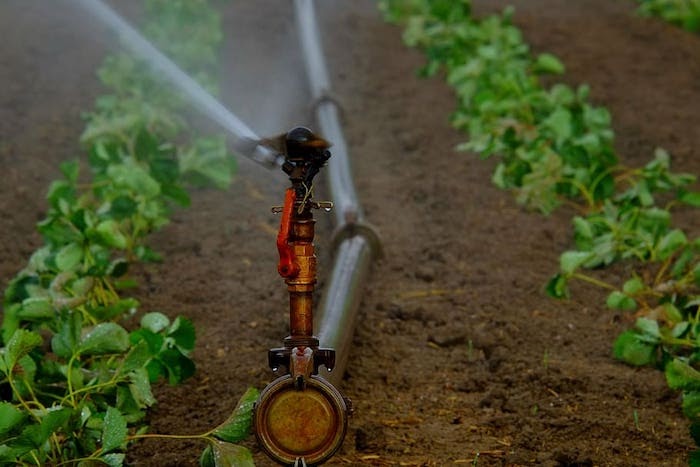
Frozen pipes — in your house or in your yard — are never a good thing. To avoid a frozen mess in your yard, shut off your yard and garden’s irrigation system and blow out the pipes before temperatures drop below freezing.
Why it’s essential to do this: Any water left inside the pipes may freeze and expand, causing significant and expensive damage to your pipes. How might this ruin your holidays? While frozen pipes have you stuck at home getting a professional on the phone, the rest of the family will be ice skating at Millennium Park.
Does your garden have any other water features you need to winterize? If you’re winterizing a garden pond or water garden, you’ll need to consider the needs of your aquatic life. Removing the pond’s pump will ensure the pump doesn’t freeze or get damaged. But removing the pump may encourage ice to form over the pond, which can kill your fish.
Deciding how to winterize the pond can be difficult. Speak with a professional about how to best take care of your garden pond or water garden through the winter. If you decide to keep any pumps in the water, you’ll need to perform a regular maintenance routine.
11. Cover vulnerable plants
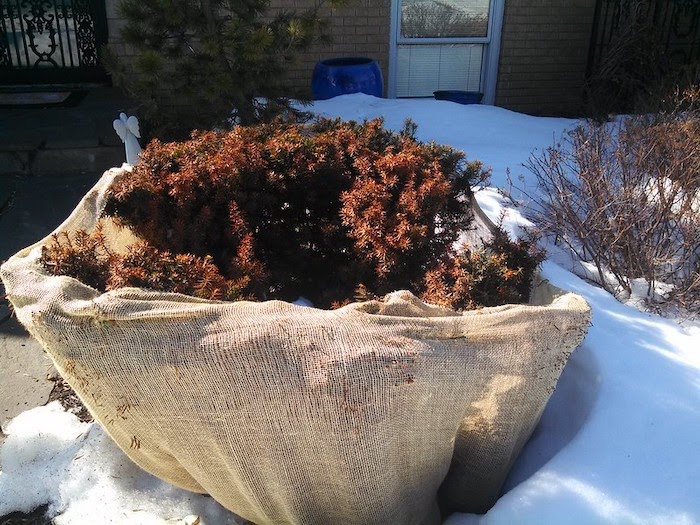
If you’re establishing new woody plants, you’ll need to protect them from the lakefront’s splintering winter winds.
Here’s how to do this: When the weather station warns of a temporary freeze or gushing winds, surround these plants with landscape fabric, burlap, or blankets. If you can, use a frame to prevent the cover from touching the plants.
Even your flower bed can use some protection from heavy snowfalls and frosts. Cover the flowers with tablecloths, bed sheets, or landscape fabric to help protect them.
Remember: When the threat of frost and wind has passed, remove these coverings from your plants to ensure they get needed sunlight and don’t get too warm.
12. Clean your gardening tools
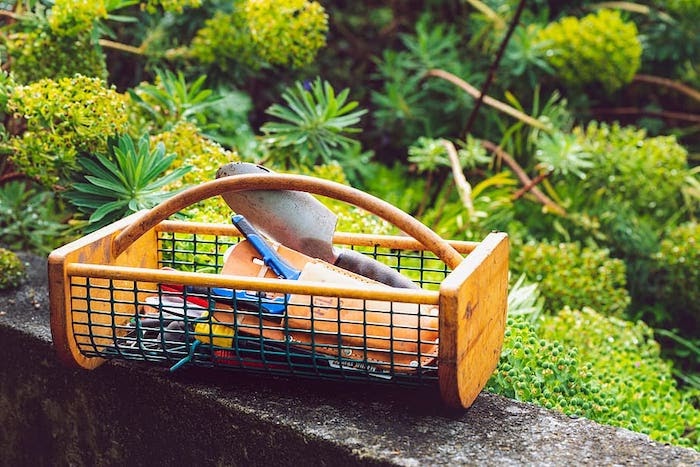
Before you put away your rakes, shovels, and trowels for the winter, you’ll need to scrape off the mud. Keeping your gardening tools clean is a must all year round, but it’s a task that’s been easy to delay… until now.
No more excuses: Get the hot water running, the soap bubbling, and get your tools squeaky clean.
Why this is important: Tool maintenance is essential for a healthy garden. Dirty tools spread diseases and pests to your vulnerable plants. Proper maintenance also ensures your tools are sharp, long-lasting, and in good condition to slice through the soil with ease.
13. Give your garden a long drink
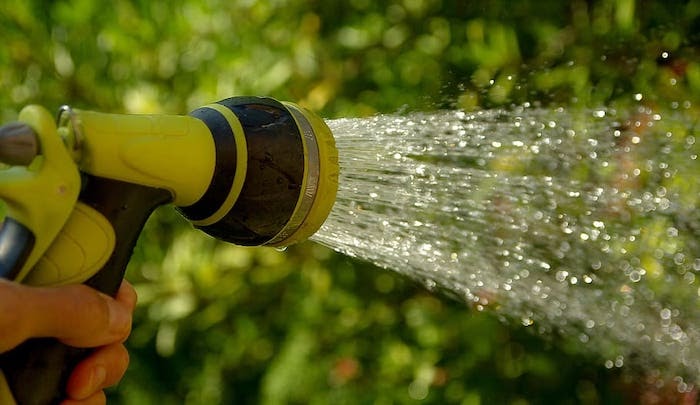
As cold weather approaches, your garden watering days aren’t over. To protect your plants from drying out this winter, replenish your plants a few times a month with a long, deep watering.
But remember: Never give your plants a refill when the temperatures are close to freezing. It’s best to water your garden on those unseasonably warm days.
14. Review this year’s successes
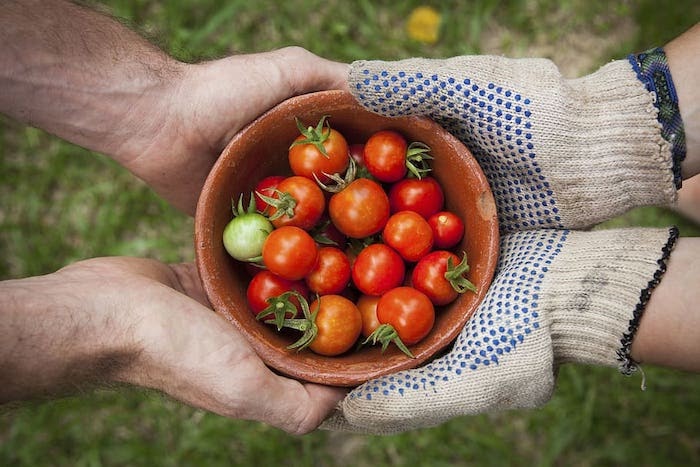
As you begin to winterize the garden, look ahead to springtime and the next growing season. Review what worked this year, and what didn’t.
Why you should do this: After identifying your garden’s successes, you can build upon those strengths for next year.
For example, did a specific vegetable not perform well this season (or the season before that)? Maybe it’s time to make a change. Removing a low performing vegetable creates more space for a higher performing crop.
The same goes for your flower garden. For example, if the perennial coneflowers haven’t met your expectations, you might choose to replace them rather than divide them.
When to Call a Professional
If winterizing your Chicago garden isn’t how you want to spend the weekend, call a landscape professional near you to handle the work.
A professional can help winterize the irrigation system, prevent frozen pipes, spread mulch and compost, and even maintain the landscape through the winter. You’ll likely need to harvest your garden vegetables yourself, but that’s the fun part.
However you decide to prep your garden for bitter cold, blizzards, and ice storms, our checklist can be your guide.
And when you’re finished…
Look Ahead to the Next Growing Season
Now that you’ve checked all the boxes for winterizing your garden and looked back on your harvest, relax a bit and start planning what you will do differently next year. Need help deciding what to plant or what type of plants will thrive in your area? Visit our Chicago landscaping page for more info! We offer one-stop shopping for all your landscaping needs.
Sure, it seems like spring in Chicago may be more of a late bloomer, but you will be digging in your garden, watching plants grow, and savoring your home-grown tomatoes in just a few months.
Main Photo Credit: Pixabay / Pexels